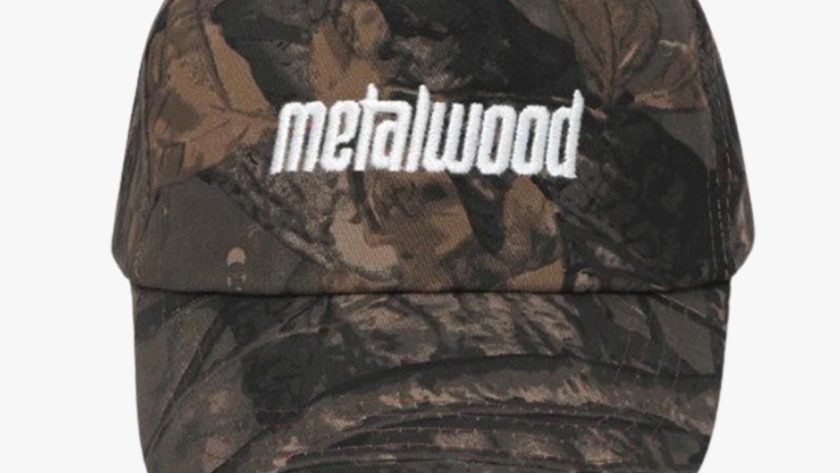When Cole Young launched Metalwood Studio, in 2020, golf style was in the early stages of a historic glow-up. Young, a former college golfer with a closet full of Stüssy, Noah, and Supreme, was struggling to find clothes he wanted to wear on the links that wouldn’t look out of place off of it. So from the outset, Metalwood’s directive was clear: by offering golf gear indebted to streetwear’s winking graphics and throwback prints, it would appeal to guys who worshipped Jebbia just as much as Jacklin.
When Young began mocking up Metalwood’s hats, the usual anodyne poly-blend options weren’t on the moodboard. Instead, Metalwood started selling logo-adorned bucket hats, truckers, and dad caps, including a camouflage 5-panel with the brand’s distinct slasher typeface splashed across the front. The camo style was meant to be a joke, Young says, but a few years and thousands of units later, it’s evolved into the rare piece of golf apparel beloved by menswear fans who have never hit the driving range.
Metalwood’s camo hat might’ve started out as a tongue-in-cheek Realtree flip, but its emergence as an insider-y status symbol feels perfectly in-line with the brand’s core ethos—and Young’s deep knowledge of streetwear lore. In the same spirit of Stüssy’s Chanel send-up, Metalwood’s hero product subverts golf’s clean-cut, elitist reputation. And in the same way that wearing a T-shirt from Supreme no longer telegraphs your ability to land an ollie, wearing the hat is no sure indication that you know the difference between an albatross and a double-eagle. (They are, in fact, the same thing.)
According to Christian Hafer, a photographer who regularly shoots the pro golf circuit, Metalwood’s hat is a staple of spectator galleries both domestic and abroad. More surprising, though, is how often he spots it off the course, in airport terminals and on city streets. “I’ll go up to New York for meetings and see some random person with it on and I’m like, I don’t know if they golf. I don’t want to stereotype this person,” Hafer says, “but they don’t look like they know what golf is.”
For non-golfers like Throwing Fits co-host Lawrence Schlossman—who Young credits with turning the hat into a hot commodity among extremely online menswear enthusiasts—the cheeky workwear riff is a plus, but the main appeal is pure aesthetics. “I was just like, oh, dang, this looks good on my dome,” Schlossman says. “I’m already a blue collar stolen valor fan, so it seamlessly fit into my wardrobe.” Which is music to Young’s ears, and a serious boon for Metalwood’s bottom line. The hat has “its own whole pillar on our balance sheet,” Young notes; its success has helped support everyday business operations (sample products for new seasons) and the occasional promotional goof (flying a plane over the U.S. Open with a “Got Blades?” sign in tow).
A camo-wrapped 5-panel might feel like an odd emblem of golf’s new swagger, but Metalwood’s canny merging of style tropes has struck a chord. The brand is still niche, but its crossover appeal bodes well for the sport’s cool factor—at least among a very small, very specific cohort of clothing buffs. For now, Young has no plans to partner with the type of big-box retailers hawking stretchy chinos and sweat-wicking polos next to the clubhouse. “I would be bummed if someone saw Metalwood on Instagram…and the only place to buy it is Dick’s Sporting Goods (or the) PGA Superstore. It just wouldn’t make sense for the brand, and it wouldn’t do the brand justice.”
And yet, Young chuckles at the idea of cashing a fat check from the right mass-market partner. If Metalwood Studio ever inks a deal with a pro shop, it’s more likely to be one with “Bass” in its name. “I would accept a million dollar PO,” he says. “I think it’d be the funniest shit ever.”



